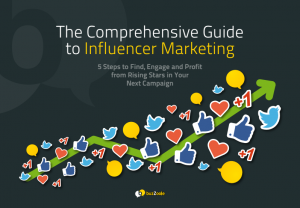Every business that has invested in content marketing has asked these questions:
- How do we measure its success?
- What are the best metrics for proving results?
- Which data-points should be presented to C-level execs to prove ROI?
If you don’t know the answers, you – and all others – should know that there is nothing new under the sun. A survey by Adobe of 1,000 US-based marketers revealed that 68% of marketing folks feel pressure when it comes to showing a return on investment on their marketing spend, which includes spending on digital and content marketing. That’s a high percentage, which explains why every marketer is always sweating over ROI.

Also, with B2C and B2B content production to rise by 77% and 76% in 2016, it only makes sense for marketers to gain insight on the ROI of their content marketing endeavors. This may also help you address some of the biggest content marketing challenges.

See that C-level buy-in? A positive ROI could convince them to invest more in content marketing. A negative could do the opposite, but industry reports reveal that marketers mostly gain from content marketing investments, so not finding the ROI at all means you’re missing out on great opportunities.
Guide to Measuring the ROI of Content Marketing
Of course, every business has its own content marketing goals. But in general, they use the tactic when pursuing one or a multiple of these objectives:
- Increase brand awareness
- Generate leads
- Achieve targeted traffic
- Grow social media followers
- Grow email subscribers
- Get positive customer reviews to build brand reputation
- Increase sales revenue
There could be some other goals, different for B2C and B2B companies, as the image cited by Brafton indicates:

So, depending on your company’s goal(s), you’ll need to track certain metrics that will determine whether your content marketing campaign is working or otherwise.
Tracking the KPIs
While BuzzFeed and some other brands have conducted questionnaire surveys to determine whether high-quality content has an impact on brand awareness, you may not have the time or resources to conduct such research. What you could do instead is track the following metrics:
- Unique Page Visitors for Landing Pages
It is important to measure unique page-views per landing page as this metric shows how many new visitors read a particular piece of content. In Google Analytics, you can go to “Behavior – Site Content – All Pages” to track unique page-views for individual content pages.

- Session Duration/Bounce Rate
If people spend more time reading your content, it means your content is performing well in terms of engagement. The metrics to track in this instance is session duration or bounce rate. Both metrics can be tracked via Google Analytics. To see session duration, go to “Behavior – Site-Contenta” and see the “behavior section” from the right column. Then you can open up the subsection of landing pages to see the session duration for particular pages. For bounce rate, go to “Behavior – Site Content – All Pages” to see bounce rate for each content piece.
- Source/Medium & Location
Source/medium metric tells about the channels where the content is performing well. For example, if greater number of users are reading your content on mobile devices, you’d be better off by investing in content types that work well for the small screen, such as videos, infographics, and other visuals. You should also look at the Location as it can really help you spruce up your content marketing process. For example, if a series of blog posts are being read by people from the US, you can invest more in that series, perhaps by partnering up with prominent US-based subject-matter experts with the help of an influencer marketing solution.
- Social Media Shares
Don’t make the mistake of measuring the likes received on your content. The thing is, clicking the like button just takes a few seconds, and people may do it by just reading the headline instead of going through the whole content. What you should be seeing instead is social media shares. People rarely share something they don’t like (OK, there are exceptions of those who criticize or make fun of a particular piece of content), so if you’re getting a lot of shares, it means people really dig into your content and they find it valuable enough to share on their networks. Tools like Trackur and Buzzsumo will allow you to measure the social media performance of your content marketing campaign.
- Number of Downloads/ Opt-Ins
Many businesses offer gated content (ebooks, white-papers, etc.) in addition to the free content on their websites. The number of downloads for these assets as well as the number of opt-ins can give you an insight on the number of leads generated by a particular piece of content. In Google Analytics, you can set up goals such as ebook download or newsletter opt-in to track the total number of leads for a piece of content. To do so, go to “Conversions – Goals – Overview”. Then under “Template”, choose the goal you want to track the leads for. There’s also an option to create a custom goal. The last step is to enter a destination page for your goal. Therefore, you can insert any landing page with gated content to track the number of leads generated by that piece of content.
- Number of Conversions
Conversions will determine the impact of content marketing on your sales revenue. If the number is high, it means your content did well to convert subscribers or website visitors into paying customers. You can use cookies to track the progress of a lead from the first instance when they open a piece of content to the final step which leads to conversions. This is important for tracking the ultimate value of the content. Another option is to use Google Analytics to set up tracking for eCommerce. To do so, head over to “Acquisition – Channels”, and see which channels drive the most revenue. There’s also the option to track conversions from social media or email, but you need to set a “New Goal” in Google Analytics and specify a value for that goal. After setting the goal value, you can see how many of your email subscribers or social media followers turn into customers. Reports will give you an insight on the estimated revenue generated by particular actions (sales because of social media shares or sales because of subscribers downloading a resource). Then, you can open “Behavior – Site Content – All Pages” to see the revenue generated by each content page.
Determining the Costs
After tracking the metrics mentioned above, ask yourself, how much have you spent creating and promoting the content to achieve those results? You’ll have to look at several factors to determine the cost of your content marketing campaign. The most common ones are:
Writers Earnings: The earnings of the writers who created the content pieces for your content marketing campaign will occupy a major portion of the total campaign costs. Expenses incurred in creating blog content, email content, whitepapers, infographics, ebooks, etc. will be included in writers earnings.
Editor’s Earnings: If the content marketing plan includes the services of an editor who proofreads and corrects your company’s content, then you should also include the editor’s earnings when summing up your content marketing costs.
Advertising Costs: The expenses incurred in promoting your content should be included in your content marketing costs. Perhaps you used Google Adwords to promote your whitepaper, ebook, etc. and social media marketing to promote your regular content pieces. Advertising is necessary to get eyeballs to your content, and therefore should be included in your content marketing costs.
Software & Tools: It’s a good idea to tally the expenses for software and tools, such as premium platforms (LinkedIn Premium, Slide-share Pro, etc.), content marketing software, influence marketing software, and anything else used to market your content. For example, companies use influencer marketing tools like Buzzoole in their content marketing campaigns to get more traffic, social media shares, and conversions. The cost of all such platforms, software and tools should be included in your content marketing costs.
Here’s an image from CMI depicting what a typical cost-calculation looks like:

HBR informed that content marketing costs mostly relate to a project’s scope (e.g. outreach via press release) and its reach (e.g. marketing via influencers against no outreach). The costs mentioned above normally makeup the costs for most content marketing campaigns these days.
Finding the ROI
The ROI can be calculated with a simple content formula. Once you have defined business goals, tracked KPIs and listed the costs, it will be easier to find the ROI based on the following formula:
(Value Generated From A Content Investment – Cost of Creating & Marketing That Content) /
Cost of Creating & Marketing That Content.
The value generated from a content investment will always require you to assign a dollar value to particular conversion (like you do in Google Analytics for eCommerce tracking). For instance, the sale of an ebook may be worth $60 if there’s a one-time sale, or possibly $600+ if you make 10 sales because of positive word-of- mouth. If the ebook is for the B2B industry, a single sale could be worth in thousands. The dollar value will depend on your industry and the expected recurring revenue from sales. Once you find the value generated from a content investment, you can deduct the cost incurred in making that investment and divide it by the same to determine your ROI. So for example, if the value generated from a white-paper (which served as a lead magnet that made people buy your services) is $1000 and you spent $300 in creating and marketing that page (hiring a writer for the content of the white-paper, creating ads to promote the landing page, etc.), then you will calculate the ROI in the following manner:
$1000 – $300 / $300 = 2.33 or 233%
That’s a staggering ROI, but it is normal to expect such figures. Kraft, for example, was able to demonstrate that content marketing helped the company gained a better understanding of its customers. In just a couple of years, the company was able to show that their content marketing efforts resulted in a 4 times better ROI than traditional advertising efforts.

Expect to see something like this if you’re enjoying a decent ROI from content marketing.
Final Thoughts
As with any type of digital marketing investment, it is possible to measure content marketing to show the ROI. Make sure you’re tracking everything from the get-go and have deployments in place that demonstrate the value from your content marketing efforts. By doing all this, you would avoid the situation where you shrug your shoulders when any C-level exec asks you for ROI figures.
What are your thoughts? Do you have any additional tips for demonstrating the ROI of content marketing? Feel free to leave comments.
About Buzzoole
Buzzoole is an influencer marketing platform which allows brands to get in touch with users particularly influential in their specific markets. Thanks to a property technology, the platform allows to select, negotiate and manage influencers in order to involve them in digital/social pr campaigns, through an assisted or self-service way. In addition, Buzzoole provides extensive reports in order to evaluate the campaign performance.
Do you want to find out more on influencer marketing? Download our guide!



